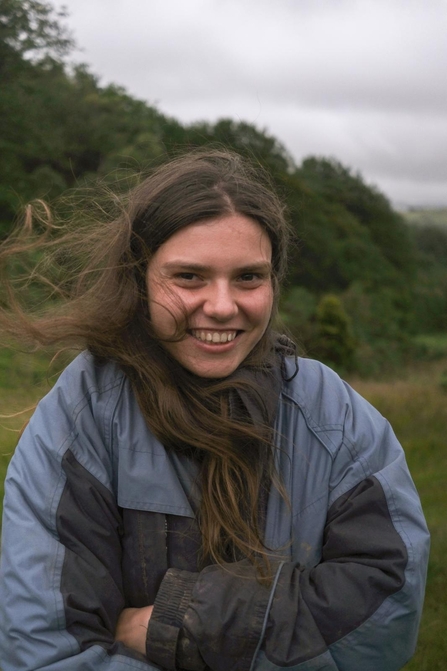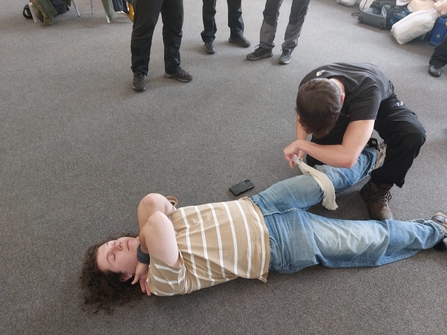Hi, my name is Lizzy and I am the third new conservation trainee to write a blog this year!
Learning new skills

I spent the year between October 2023 and October 2024 as a residential volunteer at the Centre for Alternative Technology in Machynlleth, working full time within their Woodlands and Water Team. I had a fantastic year living on site and getting involved with every aspect of the work, from helping to maintain the water and sewage system to helping with tree felling to greenwood work and round wood building.
Living at CAT and spending time with the amazing people who worked there really helped me to expand my horizons, gain new skills and build a deeper understanding of the natural world and how our actions impact it both for good and for ill. When my time there was up, I knew I wanted to further pursue a career in conservation but was unsure what my next steps should be. I was, therefore, very excited to find this traineeship advertised on the Worcestershire Wildlife Trust website. So far I have had a brilliant time, developing existing skills and knowledge and gaining completely new ones.
We have recently completed our first aid training, gaining both our Emergency First Aid at Work + Forestry certificate and our Outdoor First Aid certificate. Given the nature of our traineeship, often working with dangerous equipment in remote locations, it’s vital that we all know what to do should the worst happen and someone has a serious accident. As it was just a two day course, it was jam packed with content, including several practical scenarios.
The first practical exercise we tried our hand at was CPR, using high tech dummies that could track the speed and success rate of your compressions and ventilations. This was quite intimidating as, while I’d done CPR training before, I’d never had it so closely and accurately monitored. However, after one false start with a leaky-lunged dummy, I was able to reach a high score of 98%, with all the other trainees reaching similarly high scores as well.

Our next practical was the choking exercise. This involved special padded vests which allowed us to safely practice back blows and abdominal thrusts on each other, without the risk of causing internal damage. This was super valuable, as I’d only ever covered the theory before and never been able to practice them myself. To judge the success of the abdominal thrusts, a small bit of foam was placed above an air cushion, which had to be compressed sharply enough to send the foam piece flying. This was harder than I thought, as you have to be quite precise with your movements, but eventually we all got the hang of it.
Finally, we learnt how to pack an arterial bleed with a (in this case fake) haemostatic bandage. A real haemostatic bandage slows bleeding as it contains chitosan, derived from shellfish, which causes blood to clot faster then it does on its own. As this exercise involved efficiently stuffing a bandage into a mock wound, which was complete with a pump full of fake blood, it was easily the messiest exercise we did that weekend.
As well as our practicals, we covered how to recognise and react to a large range of different scenarios, from heatstroke to seizures to broken bones. While I sincerely hope I won’t have to use most of it during this traineeship, it is extremely important that we know it, both for the upcoming year but also throughout the rest of our careers, and I’m very grateful to have had this training opportunity.
Thank you and I will see you in my next blog!

